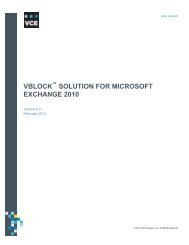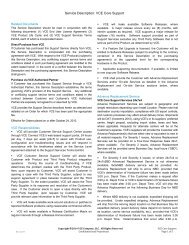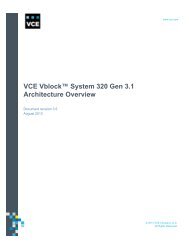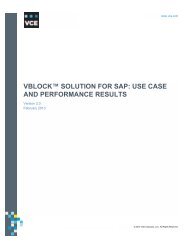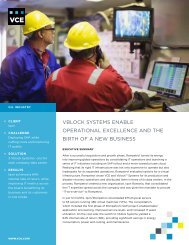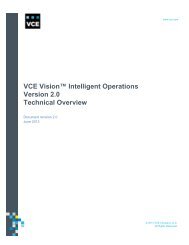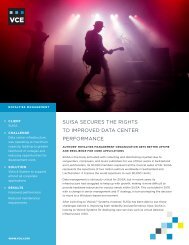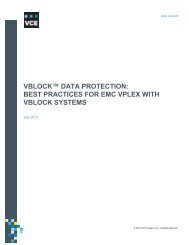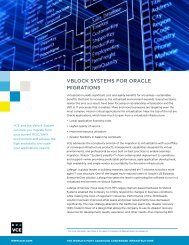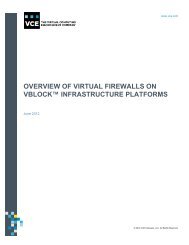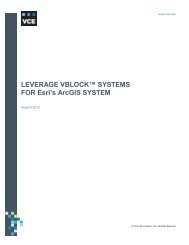Vblock Solution for Trusted Multi-Tenancy: Design Guide - VCE
Vblock Solution for Trusted Multi-Tenancy: Design Guide - VCE
Vblock Solution for Trusted Multi-Tenancy: Design Guide - VCE
You also want an ePaper? Increase the reach of your titles
YUMPU automatically turns print PDFs into web optimized ePapers that Google loves.
Components<br />
Number of virtual machines<br />
vCenter Chargeback Serv er 1<br />
vCenter Chargeback Database 1<br />
v Shield Manager 1<br />
Note: A vCloud Director cluster contains one or more vCloud Director serv ers; these servers are referred to as<br />
cells and f orm the basis of the VMware cloud. A cloud can be <strong>for</strong>med from multiple cells. The number of<br />
vCloud Director cells depends on the size of the vCloud environment and the level of redundancy.<br />
Figure 8 highlights the cloud management cluster.<br />
Figure 8. Cloud management cluster<br />
Resources allocated <strong>for</strong> cloud use have little overhead reserved. For example, cloud resource groups<br />
would not host vCenter management virtual machines. Best practices encourage separating the cloud<br />
management cluster from the cloud resource groups(s) in order to:<br />
• Facilitate quicker troubleshooting and problem resolution. Management components are strictly<br />
contained in a specified cluster and manageable management cluster.<br />
• Keep cloud management components separate from the resources they are managing.<br />
• Consistently and transparently manage and carve up resource groups.<br />
• Provide an additional step <strong>for</strong> high availability and redundancy <strong>for</strong> the trusted multi-tenancy<br />
infrastructure.<br />
© 2013 <strong>VCE</strong> Company, LLC. All Rights Reserved.<br />
30



